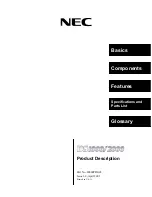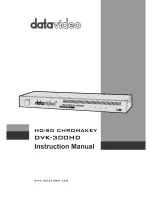
NovaLynx Corporation
200-WS-01
Page 4
April 2021
1
FORWARD
Thank you for purchasing NovaLynx products. NovaLynx has been designing and manufacturing
weather instruments since 1988. NovaLynx represents several well-known brands of quality
manufacturers, including Gill Instruments, RM Young, Kipp & Zonen, and Vaisala. It is our hope that our
products will meet all your monitoring requirements.
2
INTRODUCTION
WeatherPort 200-WS-01 Wind Sensors
are moderately priced anemometers designed for general
applications up to 125 mph (56 m/s). The sensors are easy to install and maintain. They are
constructed of injection molded thermoplastic, anodized aluminum, and stainless steel for reliable
operation in adverse environments.
The base of the sensor is designed to mount on a vertical 1.07" (27 mm)
diameter mast. If the sensor cannot be mounted at the top of the mast,
an optional side-mount boom (NovaLynx 200-153) is available.
Most versions of the 200-WS-01x sensor include 40 feet (12 m) of cable.
The cable is attached to the side of the sensor, as shown in the photo, or
it exits the base. Be aware that if the cable exits the base, it must be
threaded through the supporting mast.
Cable (Side Exit)
The 200-WS-01 is a cup-style anemometer. One or more permanent magnets in the rotating cup
assembly cause a reed switch in the base to close momentarily, so that the frequency of pulses is
proportional to wind velocity, and the number of pulses is proportional to distance.
Sensors designed for monitoring
wind speed
output 3 pulses per revolution (3 ppr).
Sensors designed for monitoring
wind run
output 1 pulse per revolution (1 ppr).
3
PRECAUTIONS
Handle the sensor carefully as the cup assembly is fragile. Do not lay the sensor on its side which would
place strain on the cup assembly.
The shield wire in the sensor cable is electrically connected to the shaft holding the bearing / cup
assembly. The purpose is to bleed off static that would otherwise affect the sensor output. Therefore it
is important to earth ground the shield wire for best results.
Installations where nearby lightning strikes are likely should include a properly grounded lightning rod
above the level of the sensor, preferably on a separate tower.




























